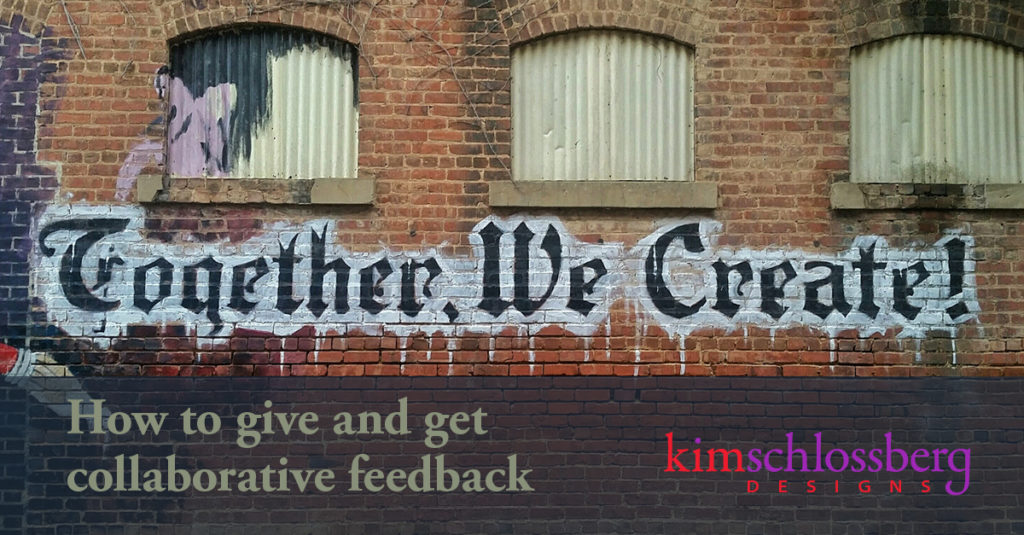18 feedback tips to get you and your designer on the same page
Every design process goes through a feedback and refinement stage. Design is an iterative process, and if it’s done right, it can lead to a better outcome than either client or designer imagined. Nothing is perfect on the first round, so enjoy the feedback process and know this is how to get a fantastic design solution.
I’m not putting all the onus of providing good feedback on the clients. These 18 tips will be helpful for designers, too – to help us ask the right questions, to elicit good, helpful feedback.
- Review the goals of the design. This should have been well discussed before any design work started, but it’s always good to revisit to make sure the goals didn’t change, and that everyone understands what the project is meant to accomplish.
- Focus your feedback on how the design would appeal to and work for your audience. This is not about using the boss’ favorite color, but on choosing what works best to solve the goals at hand.
- Understand where you are in the design process. Are you looking at a pencil sketch? A wireframe of a website? Or something intended to be more polished? Are you looking at a rough layout or a final color mockup?
- Don’t give any feedback right away. Sit with the design for a few days before you provide feedback. A bulletin board is a great place for you to live with your designs to see how they work over time.
- Try not to design by committee. If you must, have a process in place to manage all the people on the client side.
- Answer: How does this design make you feel? “The concept feels too ______________, or it’s not ______________ enough.”
“I love how [insert which part you love] ______________ feels like ______________.” - How does the design meet the main goals of the project? How does it fall short?
- When looking at the design, ask yourself: What do you like? What do you not like? Be as specific as possible.
- If something doesn’t work, present the designer what you see as the problem (not the solution). For example: “I have a hard time finding the call-to-action” vs. “Make the call-to-action red.” Often the designer has a different or better way to solve the problem that you might not have considered.
- Ask questions. Usually designers have reasons for making the decisions they did. It might help you to understand what those reasons are.
- Please don’t make all of the feedback negative. Let the designer know what you like!
- You might be given several options. Do you love any of the design options as they are? What do you like? Dislike? Are any close, but perhaps you’d like to see further variations of that concept?
- Don’t be afraid to tell the designer if you really don’t like something. The designer will try to figure out what’s not working, so she might ask a lot of questions. This is not to argue with you – this is to understand how to design something that works better.
- Do any of the options spark any new ideas or questions?
- Is anything is missing? Should something be given a higher / lower priority?
- If you’re communicating via email, compile all your comments into one email document.
- Use bullet points or numbers if you have several revisions.
- All of these questions can help avoid the most expensive kind of feedback possible: “I don’t know what I want, but I’ll know it when I see it.”
Don’t try to use all 18 questions and tips – that is way too overwhelming! But try a few, and see what works for you, and with that specific relationship. Questions like these will help you and your designer get on the same side of the table, addressing the design problem as a team.
Photo by “My Life Through A Lens” on Unsplash
- How 2020 can make 2021 better - December 28, 2020
- Welcome to the Kim Schlossberg Designs newsletter - December 18, 2020
- A Strong Brand is the Key to Resilience - April 10, 2020

